How to Choose the Best Conference Room Layout for Your Meetings
The right conference room layout sets the tone for successful meetings. The way you arrange tables and chairs has a big impact on collaboration, comfort, and productivity.
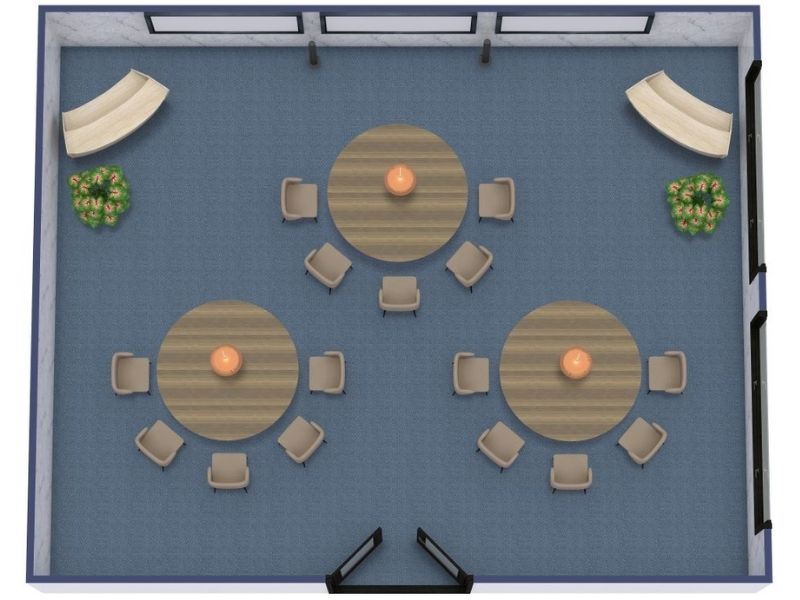
A conference room’s layout is an important element in making sure that the room works well for meeting participants.
If you are planning one or more conference room layouts, you’ll want to think about the goals for each room, learn the typical items with which to furnish a conference room and check out the most common layouts.
Goals for a Meeting Room
For each conference room you are designing, one of the first steps is to think about your goals for the room.
First off, what is the expected headcount for typical meetings in the room? For example, is the room for team meetings of 2-6 people, or for larger team meetings of, say, 20 people?
Some conference rooms are used for training sessions, while others might be for luncheon meetings. So, it’s a good idea to think through the uses and goals for each conference room first.
Be sure to also consider accessibility, such as making sure there is enough space for a wheelchair user to navigate the room, and what equipment to install to make sure the room meets the user’s needs.
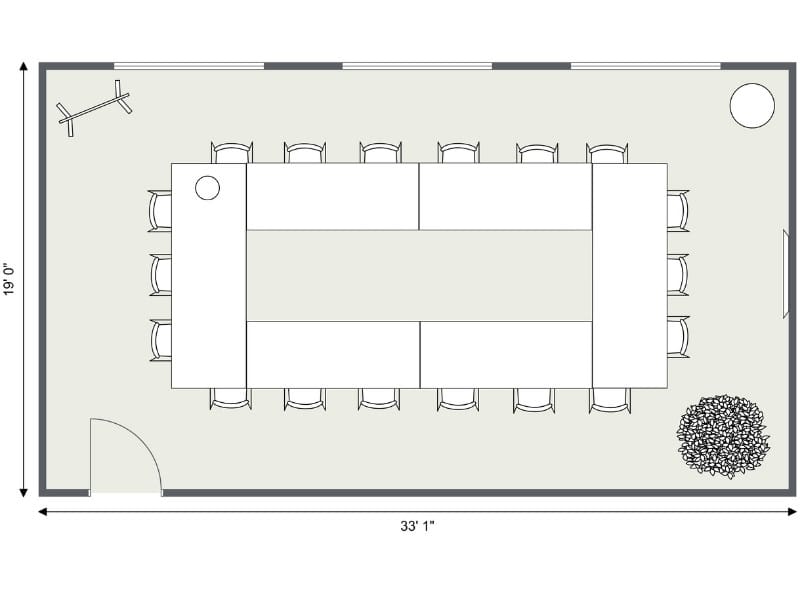
Standard Equipment
Depending on your goals for each conference room, the furnishings and accessories can vary. Here are some of the most common items:
- One or more tables, and chairs
- A credenza for holding room supplies. On top, you’ll often find a coffee maker and/or hot water carafe
- Some meeting rooms may have an under-counter fridge for cold drinks
- A whiteboard or interactive Smartboard
- A video display system with a large computer screen, television screen, or projector
- Audio or video conferencing equipment
Common Conference Room Layouts
It’s a good idea to understand the four most popular layouts for meeting rooms. This should give you a good start and then you can customize the floor plans for your particular needs.
Standard or boardroom layout
A standard or boardroom layout is one of the most recognizable meeting room setups. It usually features a rectangular, oval, or round table in the center, often with a credenza along one wall for supplies. Depending on the purpose of the room, you might also add a whiteboard or a wall-mounted TV screen.
This setup works well in many situations. In smaller rooms, you’ll often see a round table with space for 2–6 people. In larger rooms designed for board meetings, the table is typically long and rectangular, with high-end finishes and seating for 20 or more.
Here are a few things to consider with a standard or boardroom layout:
- A round table makes it easy for participants to see each other and helps give everyone an equal voice, making it ideal for team meetings.
- For larger rooms, think about where the meeting leader will sit or stand. Adding a visual focal point at that location can help guide attention.
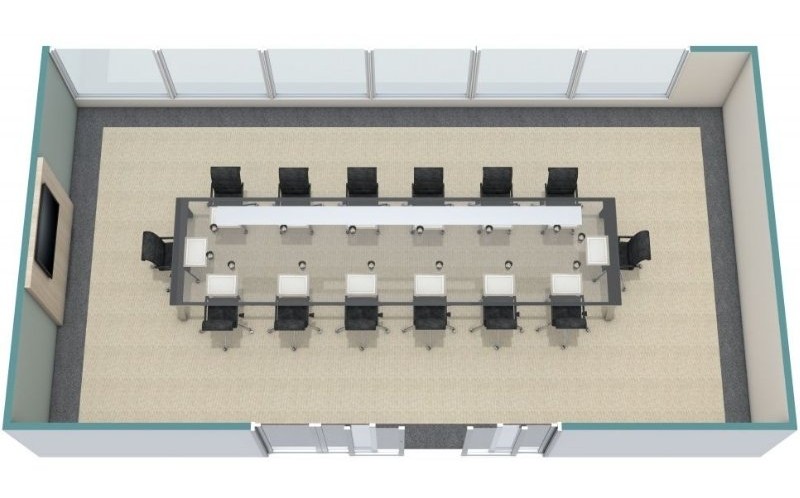
U-shaped layout
A u-shaped layout places three or more rectangular tables in the shape of a U.
This layout works well for a training room or larger team meetings where a presenter will be at the front of the room.
A benefit to this layout is that no one will have their back to a whiteboard or TV screen.
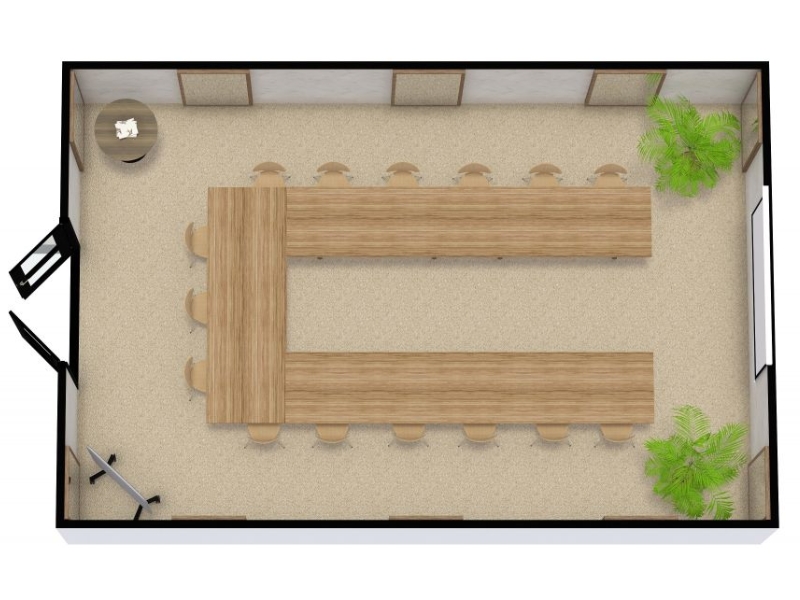
Auditorium style
If you often host informational-type meetings, guest speakers, or panelists, you may want to set up a conference room in the auditorium (theater) style.
In this case, you’ll lay out rows of chairs facing the front of the room. This floor plan is space-efficient as there is no table in front of each participant.
There may be a podium or table at the front for the speaker or panelists. The front wall may have a large screen or whiteboard.
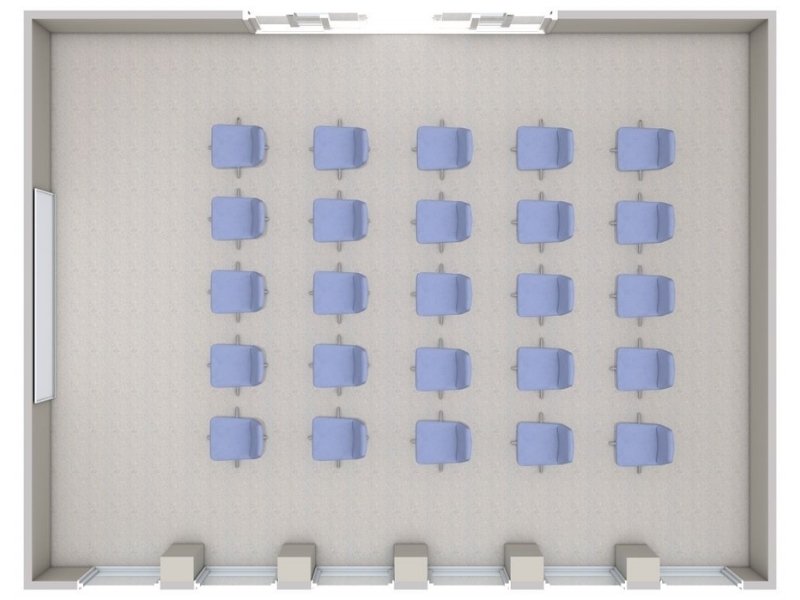
Classroom style
Classroom style is similar to auditorium style, except that there is a table in front of each row of chairs.
This layout works well if meeting participants need to use laptops or take notes during meetings.
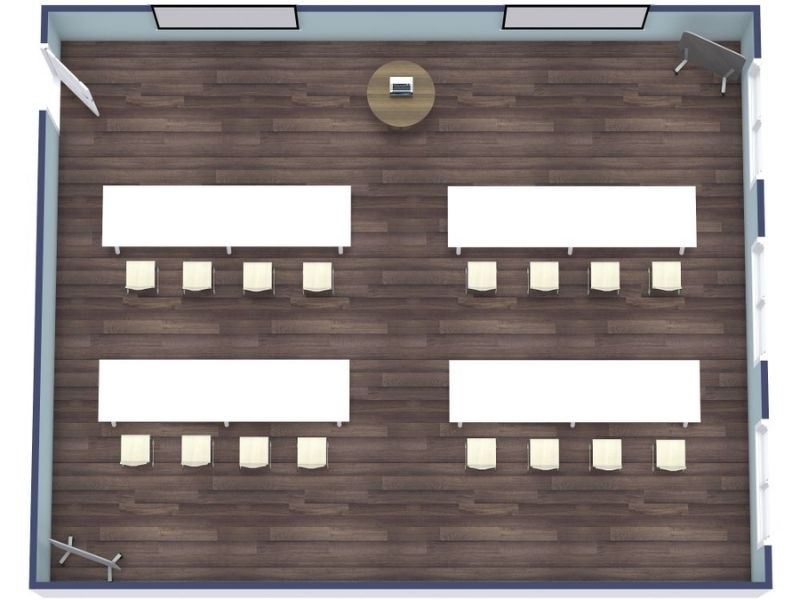
Banquet Style
The banquet style layout arranges round tables with chairs around each one. While more common in event spaces, it can also be a useful option for conference rooms when the goal is networking, group discussions, or team celebrations.
Unlike a boardroom or classroom setup, banquet style emphasizes interaction within smaller groups rather than focusing on a single presenter.

Layout and Room Size Tips
Don’t overcrowd your conference room, or it will feel cramped and uncomfortable. Aim for about 3 ft (1 m) of space per seat and, ideally, 4 ft (1.2 m) between the table ends or seatbacks and the walls.
As a guideline:
- Small conference rooms are about 150–200 sq ft (15–20 m²) and seat 2–8 people.
- Medium conference rooms are 200–300 sq ft (20–30 m²) and seat 8–16 people.
- Large conference rooms start at 300 sq ft (30 m²) and up, with space for 16 or more participants.

Plan Your Conference Room
Designing a conference room is easier when you can see your ideas come to life. With RoomSketcher, you can plan layouts in minutes, experiment with different setups, and make sure your space works for every type of meeting.
- Draw your conference room to scale in just a few clicks
- Try out different layouts to find the perfect fit
- Add furniture, equipment, and dècor
- Visualize your room in 2D and 3D
- Share your floor plan with colleagues or contractors
Related Articles
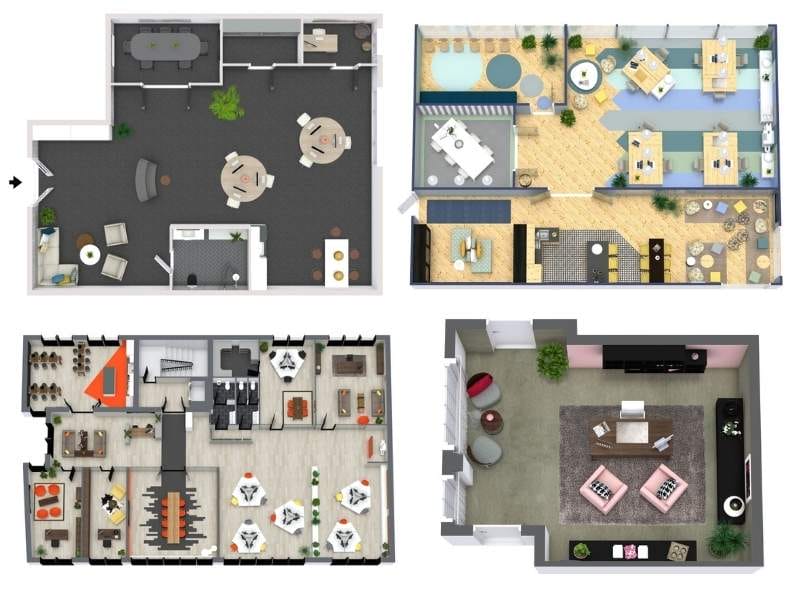
10 Best Floor Plan Software Tools for Office and Workplace Design
Are you struggling to find the best floor plan software for office and workplace design? We’ve compared and ranked the top tools to help you plan efficient layouts.

Create a Functional Office Layout with These Key Measurements
As you plan your new office layout, it’s important to consider the space required around each piece of furniture. In this post, we’ll give you the information you need.

7 Top Office Design Trends Worth Trying
Curious about the latest office design trends? In this article we’ll show you the top trends, why they’re important and how to use them in your workplace.
